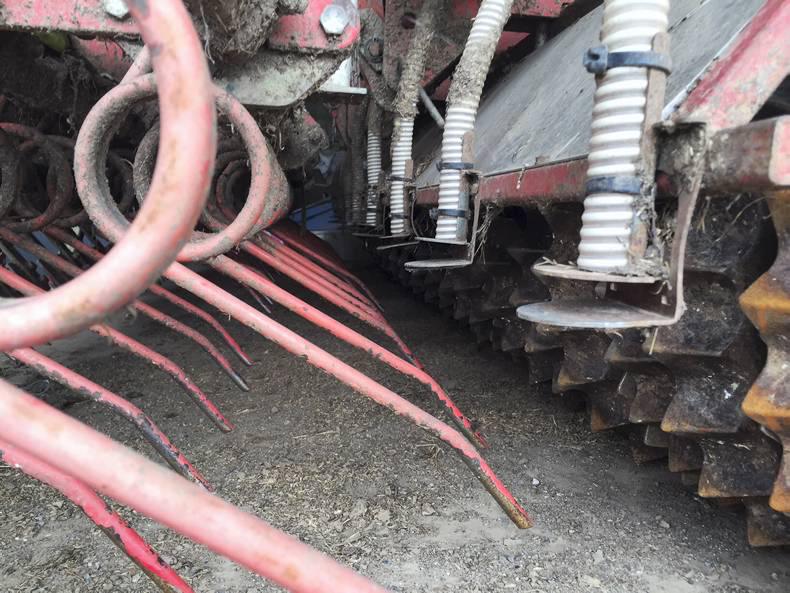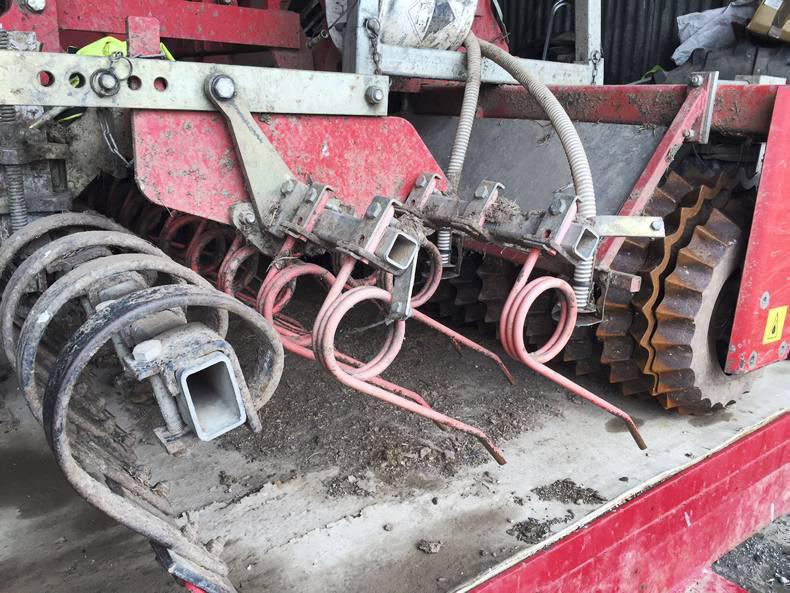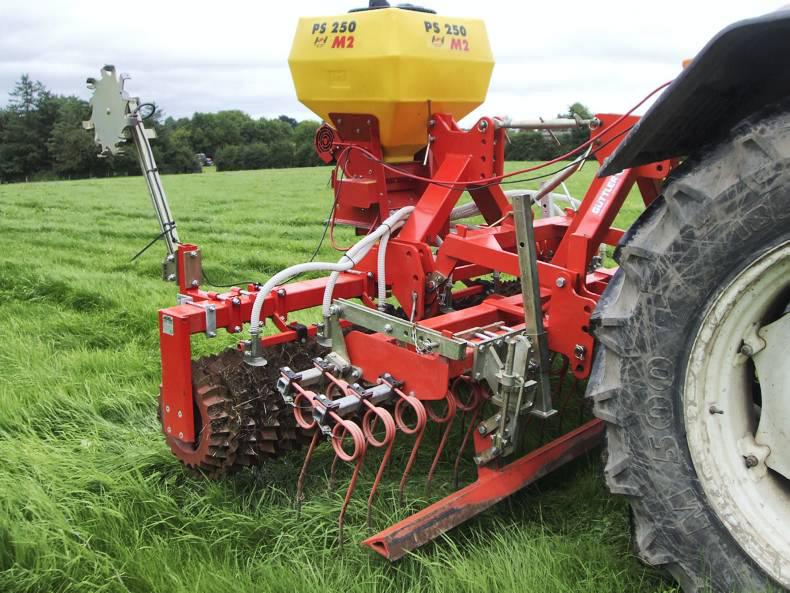For many farmers, the preferred method of reseeding grass is to direct drill. Little or no stones, no levelling and the ability to retain soil fertility at the surface are some of the reasons why it’s such a popular method. Traditionally, the machine used was the one-pass or power harrow and seed drill combination.
However, I’m hearing reports of farmers finding it increasingly difficult to find contractors willing to use this machine for direct drilling. Generally speaking, the one-pass machine was designed for sowing into ploughed ground. Direct drilling into unploughed ground is a different story and many contractors experience increased wear and tear on parts and bearings on their power harrows when used for direct-drilling grass. They find that the machines need to be replaced a lot more frequently, so they have given up doing direct drilling with the one-pass.
In response to this, machinery manufacturers have come up with a number of new machines for direct drilling into grass. In this article, we look at just two machines and speak with the operators about how to get the best results out of their machines. In general, the principles are the same for all types of direct drilling.
First up is the Güttler, which was profiled in the Irish Farmers Journal before (24 July 2014). This machine has a series of tines that rip and scratch the soil surface. The first band of tines levels and rips the sod, while the next two sets of tines are lighter and have more of a tilling effect. After these two rows of tines, the seed is dropped via an air tube and the final part of the sowing process is the rolling of the seed with the Güttler rollers.
One of the key considerations when assessing a successful reseeding job is the duration of time the field is out of production for. This is the time from spraying off to the first grazing at a cover of around 500kg/ha. Of course, a lot depends on the weather but, normally, we would expect to be back grazing after 50 days in spring and 60 days in autumn.
If a method of reseeding can speed up this process then all the better as it will mean more grass will be grown on the farm. Pat Boyle is an agricultural contractor from Thurles, Co Tipperary, who has been using the Güttler since 2010. I asked Pat what were the common traits behind the most successful job he has done.
“Conditions must be damp for best results. If it’s too dry, I’ll tell farmers to spread slurry on the field the day before I’m due to sow. Slurry softens the ground and improves the seed-to-soil contact, while also reducing the amount of bag phosphorus and potassium required. The next most important thing is to have the field bare before sowing. Ideally, it needs 15 days between spraying off with Roundup and sowing, but it’s as important to have all the grass removed, either by grazing tight or baling and wrapping,” says Pat.
“Some farmers will want it sown a week after spraying but there’s too much thrash on the surface then, so they are better off to wait. Lime is another important factor as it helps to neutralise and break down the thrash and dying grass,” he says.
Tom Ryan is also a Thurles-based contractor, but Tom has been running the Moore Unidrill sower for the past season, sowing grass seed and some fodder crops such as kale. The Moore Unidrill is different from the Güttler in that it uses disks to cut a slot in the ground and drops a seed into the slot, followed by a Güttler-type roller. Again, I asked Tom about the common traits in his most successful jobs with the fastest turnaround times.
“The Moore drill is unique in that there are a number of different ways that it can be used. Some people will use it the normal way, into sprayed-off ground, while others will sow after grazing or silage and then spray off between one day and a week later. Being able to sow the grass seeds before spraying really speeds up the process,” says Tom.
Tom thinks best results are achieved when the new seeds are drilled into existing grass after being tightly grazed or cut for silage, followed by the Roundup spray a day later. He says that some of his clients chose not to spray at all, but this is something he doesn’t recommend as the new grass seeds have to compete with the older, established sward.
“Soil fertility is critically important. New seeds need lots of phosphorus so I advise the farmers I work for not to skimp on the P and K when sowing and to put out plenty of lime. The other important thing to remember is to spray for leatherjackets and frit fly, which can attack the new grass seeds when they are emerging in the slots. Farmers normally include Dursban or a similar product when spraying with Roundup,” Tom says.
ADVANTAGES: Tom says that one of the advantages of sowing at or before spraying off with Roundup is that the new grass has germinated and is growing before having to deal with the breakdown of the existing sward and the increased soil acidity.
Both Tom and Pat agree that not enough farmers are using post-emergence sprays to control weeds, a view supported by Dave Barry from Goldcrop: “Based on our sales of post-emergence sprays relative to sales of grass seed, it’s safe to say that only about 50% or 60% of the reseeds that go in actually get a post-emergence spray, which is absolute madness considering the bank of weed seeds in the soil. Burning off is no good on its own – you must spray after the grass comes up too.”






 This is a subscriber-only article
This is a subscriber-only article







SHARING OPTIONS: